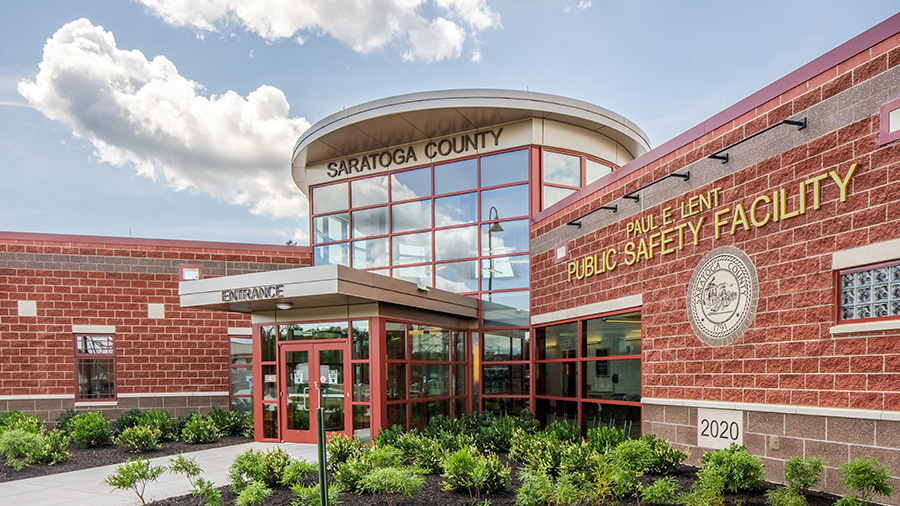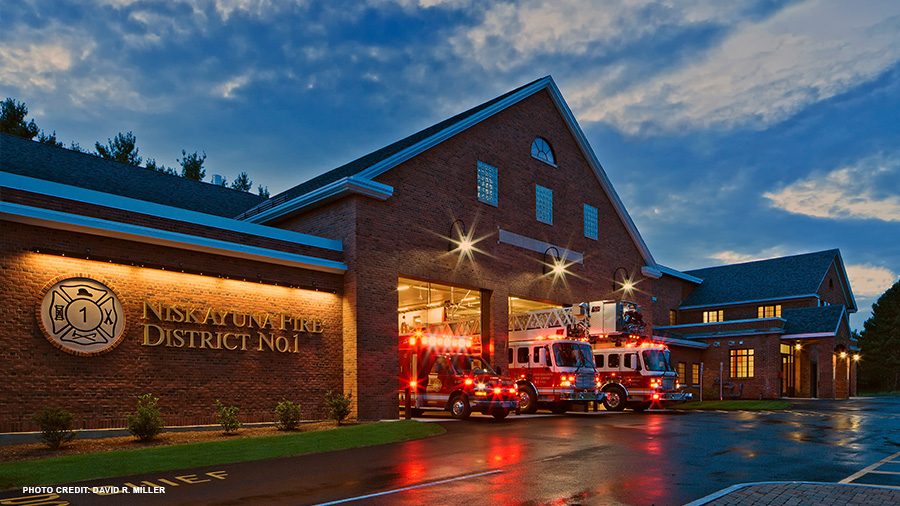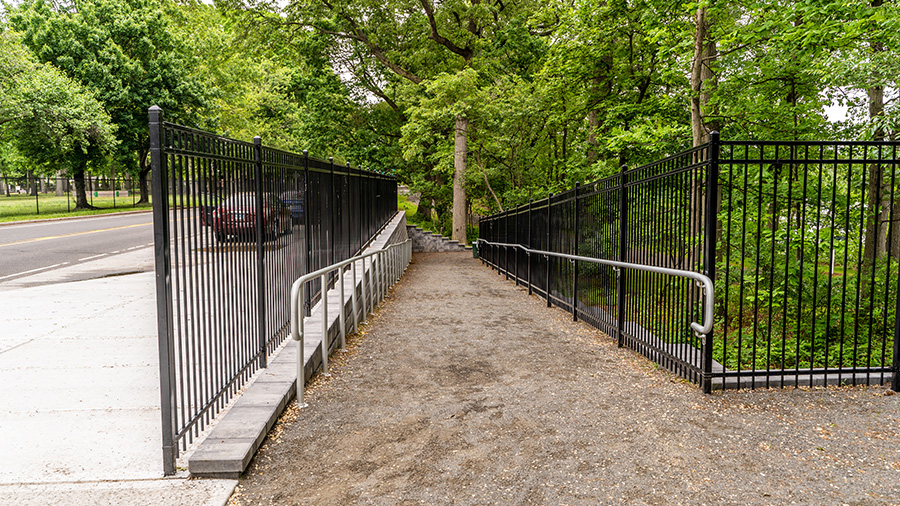Improving School Safety One Upgrade at a Time
By: Saverio Belfiore, AIA | Market Director of Education
Michael Lantier, P.E., LEED AP | Deputy Market Director of Education
Since 1996, the National Safety Council (NSC) has designated June as “National Safety Month.” While the NSC focuses on industrial workplace topics, such as roadway safety and falls, it’s also important to think about safety in schools for both students and faculty. The design of the building itself and advanced technology are the keys to the future of school safety.
Incorporating Security into the Design
A few decades ago, schools were open to the public. Visitors could walk onto campus or into the main office. However, school shootings, bomb threats, and other extreme dangers have pushed administrators to largely close off campuses. Most districts now restrict visitor access to only a single entrance, which usually features a security vestibule as the primary mode of visitor management. Vestibules should have two-way communication that keeps visitors outside the building while an administrator or security staff verifies the purpose of their visit. Security risk analysts can evaluate existing and new buildings and compile reports with greater detail on the school’s security successes and opportunities for improvement.
Life safety systems are of foremost importance. These systems may include fire alarm systems, sprinkler systems, gas detection, emergency and exit lighting, paths of egress, and emergency generators.
Outside the building, the design must prioritize pedestrian safety. The campus should have separate paths for walkers, buses, and cars, each of which should be clearly designated and easy to understand. Well-placed civil and landscape design elements such as driveways, curbs, walkways, and plantings will effectively control vehicle and people movement while still creating a welcoming school campus.
Safety is more than physical security, though. Particularly in the wake of the COVID-19 pandemic, school safety must also include protection from illness. Major viral and bacterial infections, such as swine flu and strep throat, will become more severe and more frequent over time. Filtration and ventilation systems upgrades, such as air exchanges and higher filtration ratings, are critical to ensuring the highest possible level of indoor air quality.
New Technology
Technological advancements have opened the door to new ways of improving school security. Access controls can monitor exterior doors for breaches and unauthorized access and report back to security staff. Similarly, combining lockdown technology and panic buttons with the appropriate protocols will keep students and staff safe from external threats.
Surveillance and image recognition systems have the potential to identify and track occupants and objects, but this technology must have the appropriate protocols in place. Although the two can combine to match visitors’ images against a database of stored images and help security staff screen for people who are unauthorized or banned from campus, opponents criticize such systems as an invasion of student and faculty privacy. There’s also a risk that hackers may be able to illegally access and steal stored images of students and staff, so appropriate IT network security must be considered.
Case Study
The Somers Central School District is one example of how technological advancements can make schools safer. Located 45 minutes north of New York City, this district serves nearly 3,000 students through four schools across two campuses, totaling 575,000 square feet. The District hired a security consultant to assess their safety, security, and emergency management capabilities. The consultant’s report included some recommendations that would require construction documents approved by the New York State Education Department and a bond referendum.
H2M provided pre-bond services, which included defining the scope of work and leading public presentations. Once the community approved the $11 million security project, H2M documented all existing conditions and created comprehensive plans for a District-wide access control system, wireless door hardware, closed circuit TV systems, window security film, and an electrical service upgrade.
Today, all security features are accessible through a central user interface that can place each school or the entire District on lockdown while simultaneously alerting emergency services. The 285+ cameras use an analytical software capable of recognizing license plates, counting building occupants, and activating alarms when it detects unauthorized entry. All ground floor windows and doors have security film over the glass, totaling 27,000 square feet, making it the largest known deployment of film for a K-12 district of this size. Access controls on 860+ doors allow the central user interface to remotely lock or unlock any door. RFID tags control which types of vehicles are allowed to access which of the eight gated lanes, which has the added benefit of controlling and improving traffic efficiency around campus during peak hours. The high school has the additional measure of automated full-corridor lighting that can limit or improve visibility during an emergency situation. The entire project finished in less than eight months despite delays due to the COVID-19 lockdown.
The emergence of new threats to students and staff in recent decades is frightening. It’s impossible to predict what the next great risk will be. But there are ways to mitigate and minimize threats and respond to emergencies as quickly as possible. The designs and technology are ready for implementation; investing in the upgrades now will yield benefits for years to come.
Saverio Belfiore is the Director of the Education Market at H2M architects + engineers. Mr. Belfiore has over 30 years of architectural experience for K-12, higher education, and private and charter school facilities. He actively manages a wide variety of projects and ensures compliance with the State Education Department. He prides himself on understanding the needs of the education community.
Michael Lantier is the Deputy Director of the Education Market at H2M architects + engineers. His career started in the Electrical Engineering Discipline and has progressed to a leading role at the firm, providing support to school districts throughout the tri-state area. His experience includes the design and construction of emergency, surveillance, access control, and intrusion detection systems.



